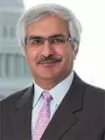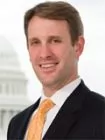In Short
The Situation: The U.S. government historically has lagged behind other countries in providing support to investors in developing and emerging markets.
The Development: The Better Utilization of Investments Leading to Development ("BUILD") Act, signed into law by the President on October 5, 2018, as part of the Federal Aviation Administration Reauthorization Act of 2018, creates a new agency, the U.S. International Development Finance Corporation ("IDFC"), to support private investment in developing countries. It will replace the Overseas Private Investment Corporation ("OPIC").
Looking Ahead: IDFC is "OPIC on
steroids" and means much more funding and new kinds of support
for American companies working in developing markets.
The U.S. government has lagged far behind China, Japan, and other
countries in providing support to its investors in developing
markets, particularly in Africa. Indeed, even European countries
have been more proactive in providing loans and other means of
support to their companies that invest in Africa.
In part to counter this challenge, the U.S. Congress established a new agency, the IDFC, to support private investment in developing countries. The IDFC will have authority to make loans, support investment funds, take equity positions in investments abroad, and provide guaranties up to a ceiling of $60 billion.
The IDFC will replace OPIC, but at twice the size and with enhanced powers—including certain authority transferred from the U.S. Agency for International Development ("USAID"). It is hoped that the IDFC—in coordination with USAID, the Millennium Challenge Corporation ("MCC"), the multi-agency "Power Africa" project, and other U.S. government entities—will be able to leverage far more than this initial $60 billion funding. Competing with China, particularly in Africa, will require hundreds of billions of dollars from the U.S. public and private sectors.
How did an agency (OPIC) seemingly on the chopping block in the early months of the Trump Administration wind up with a $60 billion budget (up from $30 billion), the ability to take equity positions alongside private investors, and authority previously granted to USAID? And how can U.S. companies maximize the opportunities provided by this new agency?
In early 2017, the White House looked critically at small, specialized U.S. government agencies with a global orientation—such as OPIC and the Trade and Development Agency ("TDA"). The U.S. Export-Import Bank ("ExIm") had long been a target of some Members of Congress. Many assumed that the "landing teams" imbedded in these internationally-focused agencies by the new administration would be tasked with shutting them down. This feeling began to shift after businessman and investor Ray Washburn was appointed president and chief executive officer of OPIC. He believed that ideas to enlarge and improve OPIC, which had been percolating in Washington policy and think tank circles for years, had merit and were worth promoting. With support from former OPIC head Robert Mosbacher, Jr. as well as leadership on Capitol Hill from Senators Bob Corker and Chris Coons, Representatives Ted Yoho and Adam Smith, the BUILD Act was born.
The BUILD Act creates the IDFC as a successor to OPIC—and quite visibly as a development agency—with a goal of promoting economic and development outcomes for eligible countries, a high level of public accountability and transparency, and strong social and environmental safeguards. Washburn has noted that unlike, for example, China's vast and more mercantilist Belt and Road Initiative, "We're more interested in creating jobs in those economies to stabilize those economies." The list of currently-eligible countries, which prioritizes less-developed countries, is available on the OPIC website.
How will the BUILD Act work for American companies? As with OPIC, a major focus of the IDFC will be to support American businesses by providing medium- to long-term debt financing through loans and guaranties for eligible investments in developing countries and emerging markets. The IDFC will continue to offer political risk insurance and provide financial support for the creation of privately-owned and managed investment funds. The agency is also authorized to take up to a 10 percent equity position in ventures in eligible countries. Unlike OPIC, the IDFC will be able to offer guaranties and invest in local currency. Other bilateral and multilateral donors, including the EU's External Investment Plan (adopted in 2017), have long had these tools at their disposal.
Bill Delphos, a former OPIC senior vice president, has spent decades helping American companies finance their work in emerging markets. He notes: "Particularly in Africa, a region full of opportunities but not in the growth plans for many American companies, the IDFC can be a game changer. It will mitigate risk and make U.S. companies more competitive."
OPIC is, and the IDFC will be, involved in a wide variety of sectors, including agriculture, telecoms, mining, and health care. There has, however, been a trend at OPIC towards greater investment in renewable energy projects around the world. Considering current U.S. government development priorities such as Power Africa (rolled out in 2013) and the 2015 Electrify Africa Act, we can expect this trend to continue. Current and proposed OPIC projects are listed online. American companies involved in the renewable energy sector should look carefully at the new opportunities the IDFC will provide. Any U.S. company considering new investments in Africa or in developing economies elsewhere should consider looking to the IDFC for support.
How else will the IDFC be different from OPIC? The IDFC will be
more development-oriented, coordinating more with other development
agencies, and utilizing their data—such as MCC's
time-tested Constraints Analysis on binding constraints to economic
growth—to better focus U.S. investments on sectors showing
the greatest potential for impact. One change that has been viewed
with ambivalence by the international development community is
moving USAID's Development Credit Authority
("DCA") into the IDFC. This significant private sector
engagement tool allows USAID to partner with local banks in
developing countries to help channel local private capital toward
U.S. development objectives. Rather than granting funds directly to
agricultural enterprises, for example, USAID uses DCA to share
risks with local lenders and develop a sustainable source of local
commercial capital.
Three Key Takeaways
- The IDFC is the most significant new U.S. government initiative in international development in a number of years, at least since the establishment of the MCC in 2004.
- Many U.S. companies will find that the IDFC can enhance opportunities for investments in developing countries—by providing a new source for financing, loan guaranties, insurance, and accompanying equity investments. This is intended to—and should—promote greater American participation in developing economies in Africa and elsewhere.
- Related tools provided by other U.S. government agencies are often underutilized by American companies. Agencies such as the Trade and Development Agency (that provides project preparation grants and more), the U.S. Department of Commerce's trade promotion arm, the Commercial Service, ExIm, and many other agencies can facilitate the entry and activities of U.S. companies in foreign markets.




